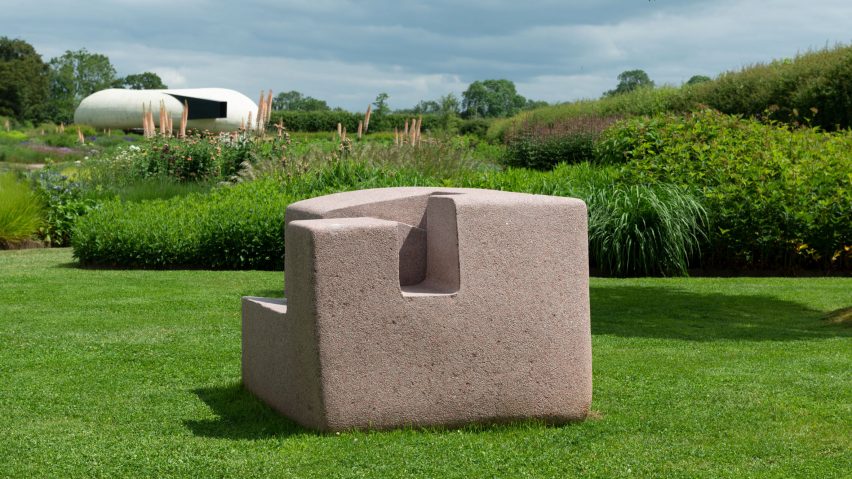
Hauser & Wirth showcases architectural sculptures by Eduardo Chillida
Artist Eduardo Chillida's monumental sculptures are on show in the galleries and grounds of Hauser & Wirth in Somerset, England.
Numerous pieces by the architecture-trained artist, who is best known for his large public sculptures, are on display at Hauser & Wirth Somerset. Each piece plays with ideas of solidity and its connection to empty space.
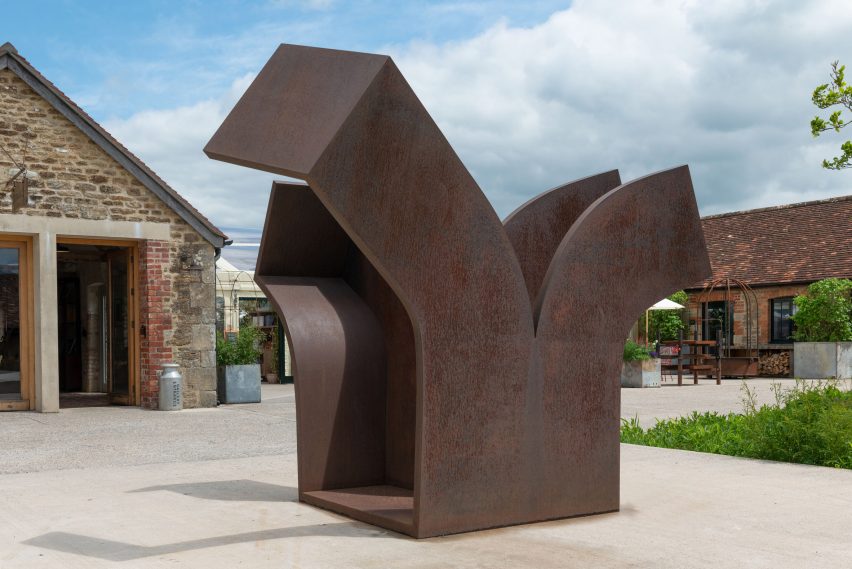
"You need the emptiness to construct over – the space is his material," said Mikel Chillida, the artist's grandson and development manager of the Chillida Leku open-air museum.
"Once you show the limits, you show the space at the same time," he added.
"So it's interesting, the relation with the space; all of these sculptures are full of material, there is no void. There is no emptiness inside of them – there is the positive material and the negative."
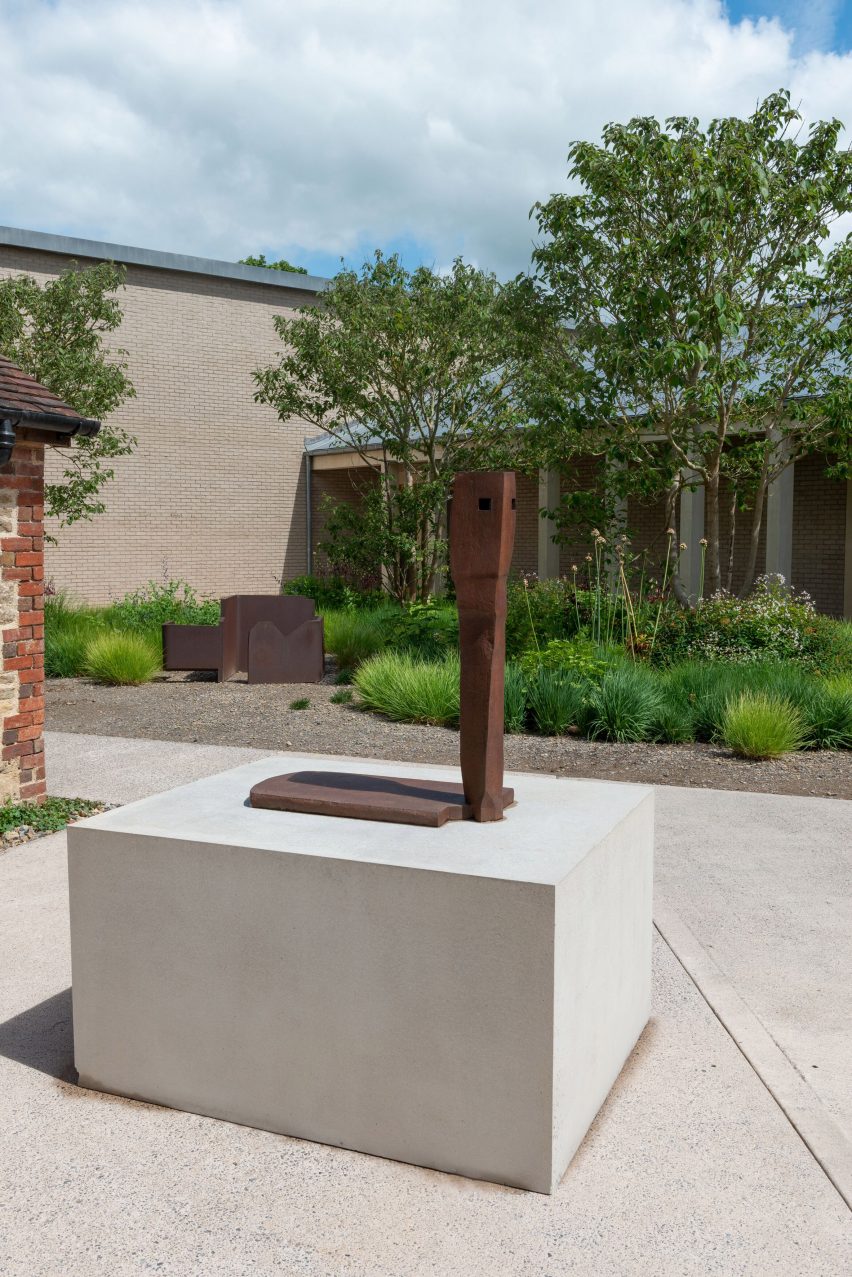
Eduardo Chillida, who was born in 1924 in San Sebastián in Spain's Basque region, studied architecture before turning to art.
His larger works are shown in Hauser & Wirth Somerset's gardens, while small sculptures and drawings are on display inside the gallery, which is located in a former farmhouse.
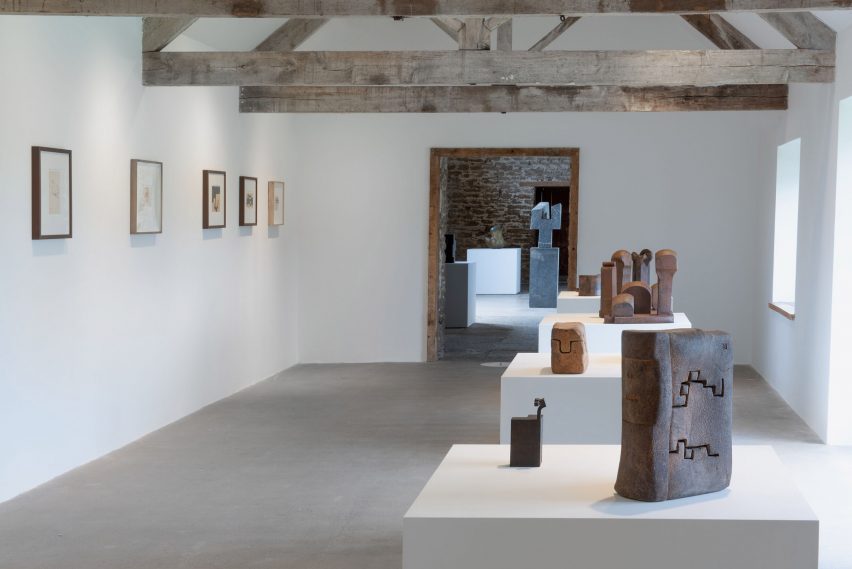
Chillida's work is a study in material use – the artist worked with Corten steel, iron, steel, granite and chamotte clay.
Despite being fashioned from these solid, very heavy materials – one sculpture in the exhibition weighs four tonnes – they also have a lightness that speaks to Eduardo Chillida's thorough understanding of working with the materials.
One example on show at Hauser & Wirth Somerset is Advice to Space IX, a large piece made from Corten steel that stretches from the ground.
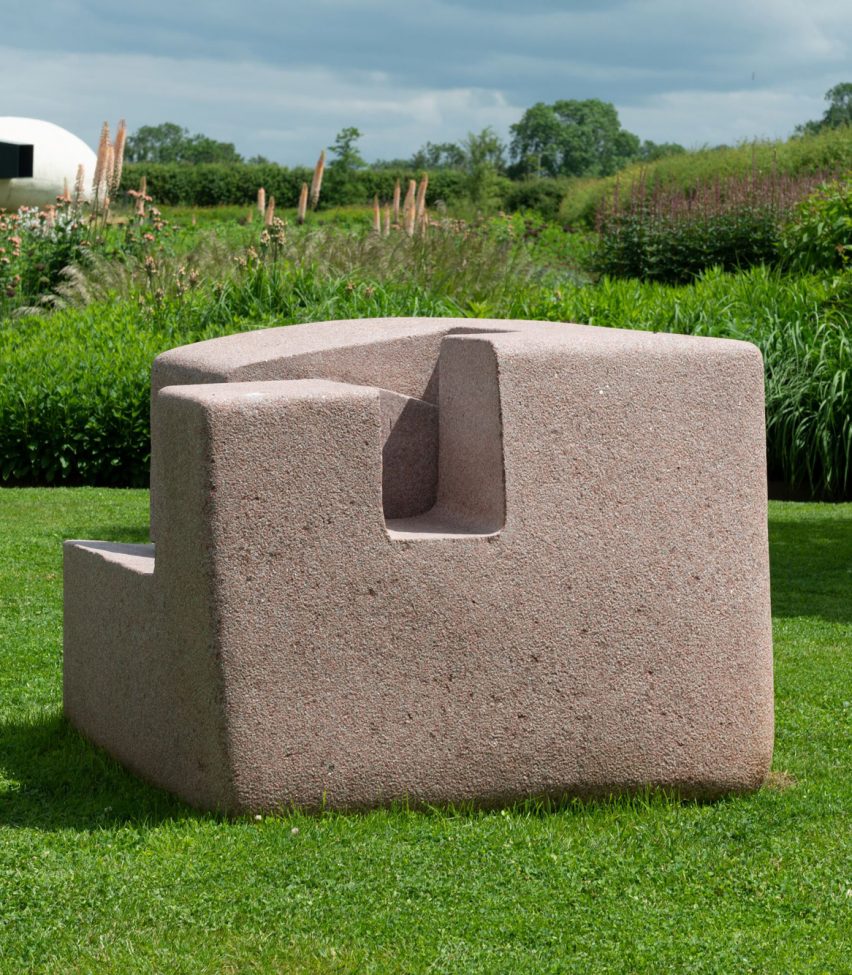
Another monolithic work, a pink granite sculpture named Stone VI, sits within the Piet Oudolf-designed gardens near the Smiljan Radić-designed Serpentine Pavilion from 2014.
The sculpture was made from a granite slab that the artist found on a trip to India.
"They always showed him perfectly cut stones and he asked 'where do you have the stones that you're not going to use, the rubbish?'' Mikel Chillida explained.
"And they showed him a selection and one was in pink granite."
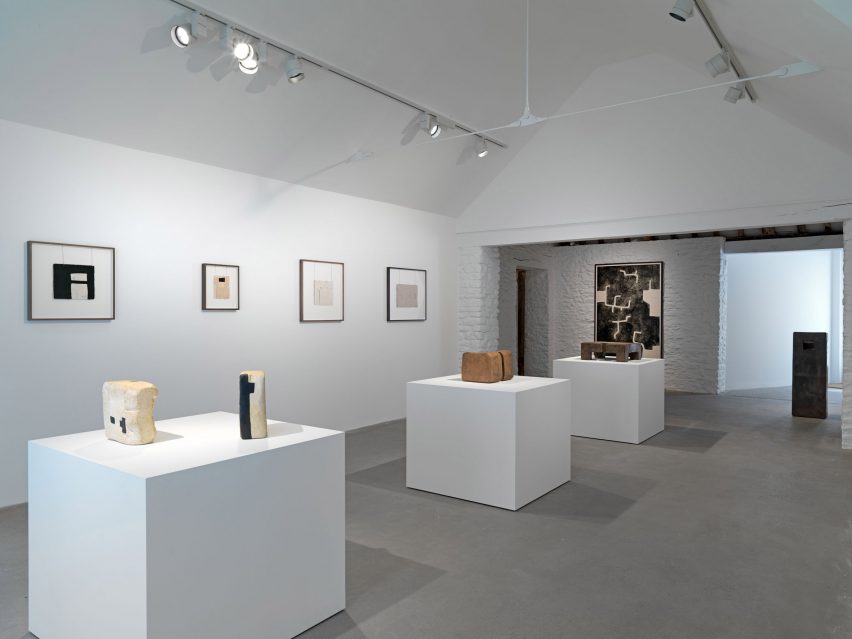
Alongside the larger pieces, a collection of Eduardo Chillida's clay sculptures are on display inside the gallery. Some of these have a natural, brown hue while others are a striking white with black detailing that adds a graphic touch to the organic structures.
"The difference is that one has been cooked in a natural oven with fire, and one in an electrical oven," Mikel Chillida explained.
"So there is no smoke and it is white. The black isn't ink, it is copper; it's the result of an oxidation process as he painted it with copper oxide."
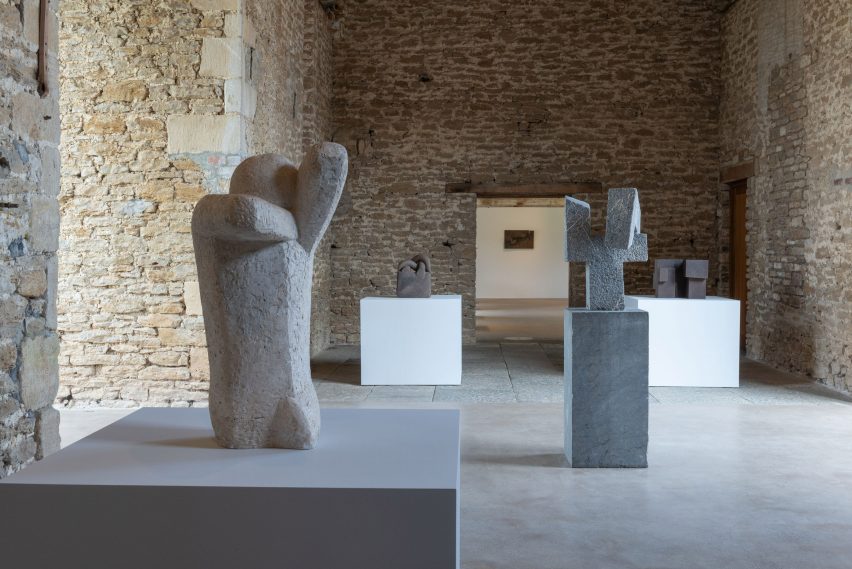
Eduardo Chillida passed away in 2002. As well as his public installations, Chillida's work can be seen at Chillida Leku, which Hauser & Wirth collaborated with for this exhibition.
Other recent exhibitions include Uncommon Found, which physically showcases 19 designers found on Instagram, and Seven Stories about Mirrors, for which design duo Front created seven reflective objects.
Photography is by Ken Adlard.
Eduardo Chillida will run from 26 June 2021 – 3 January 2022. See Dezeen Events Guide for an up-to-date list of architecture and design events taking place around the world.